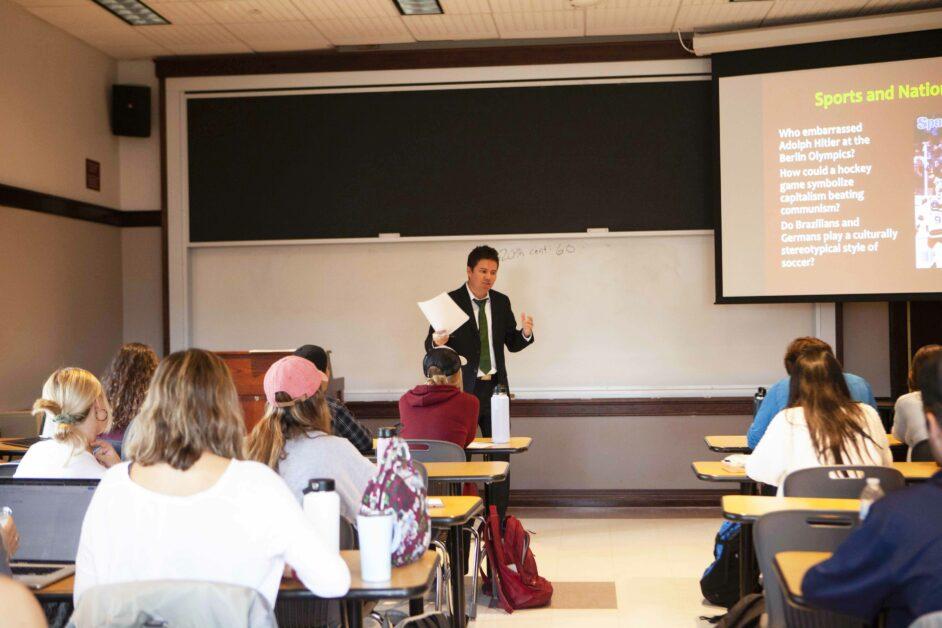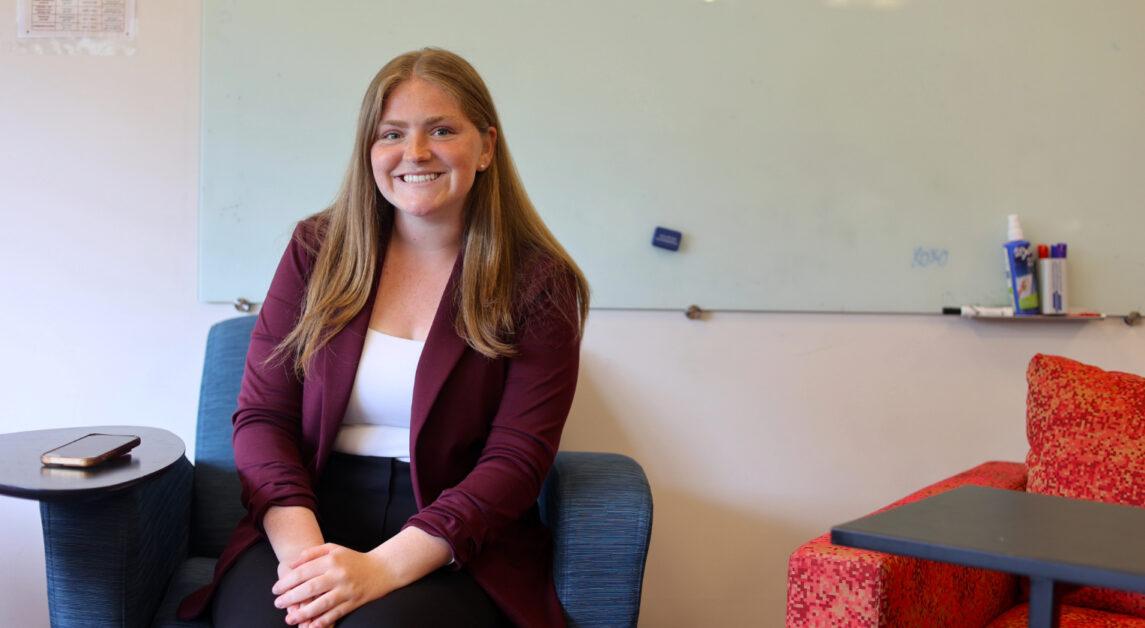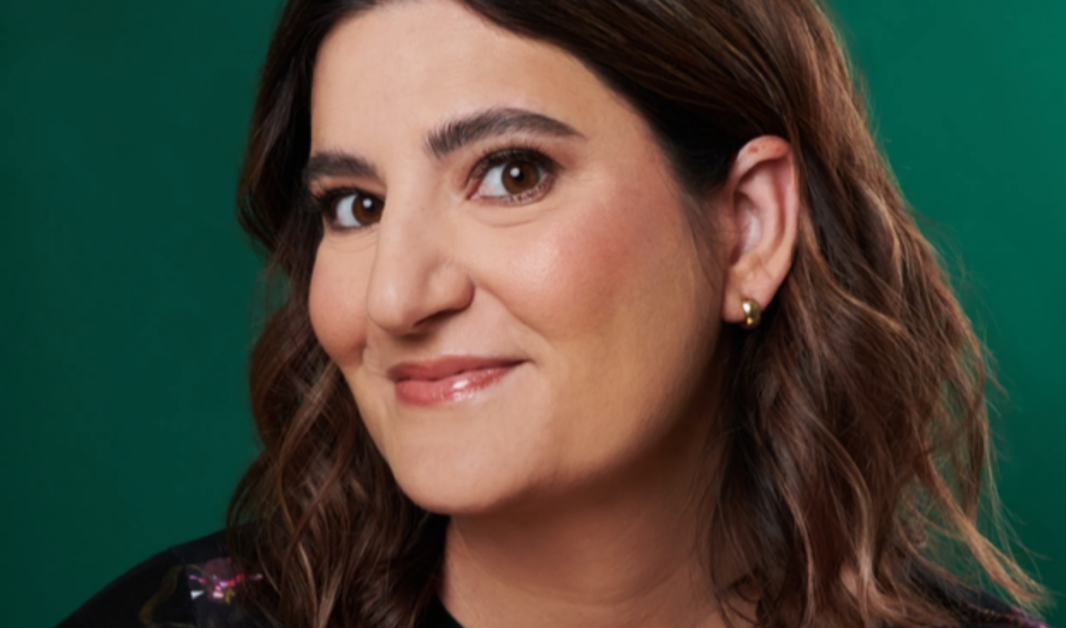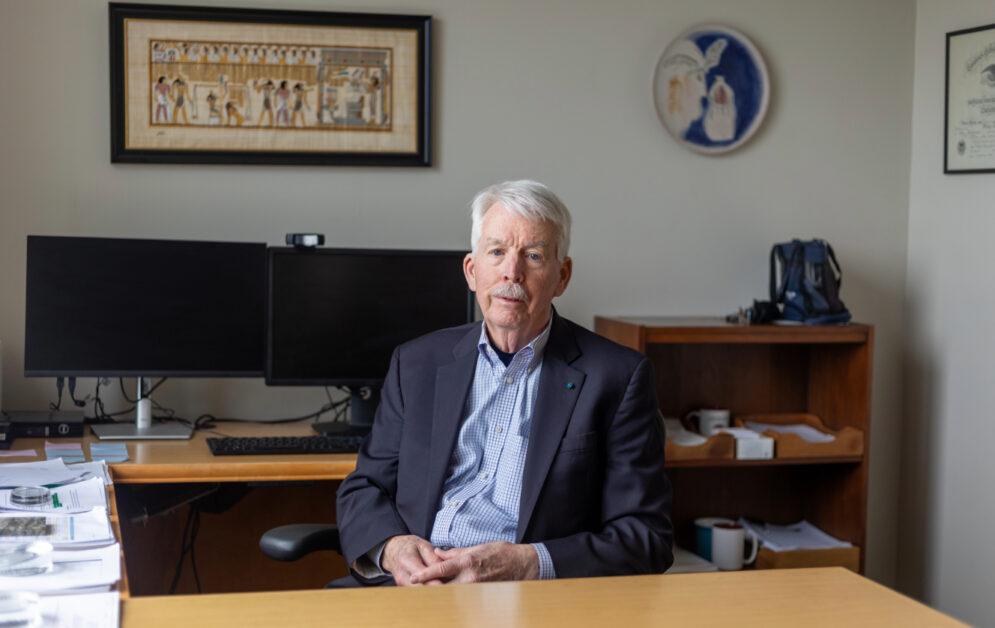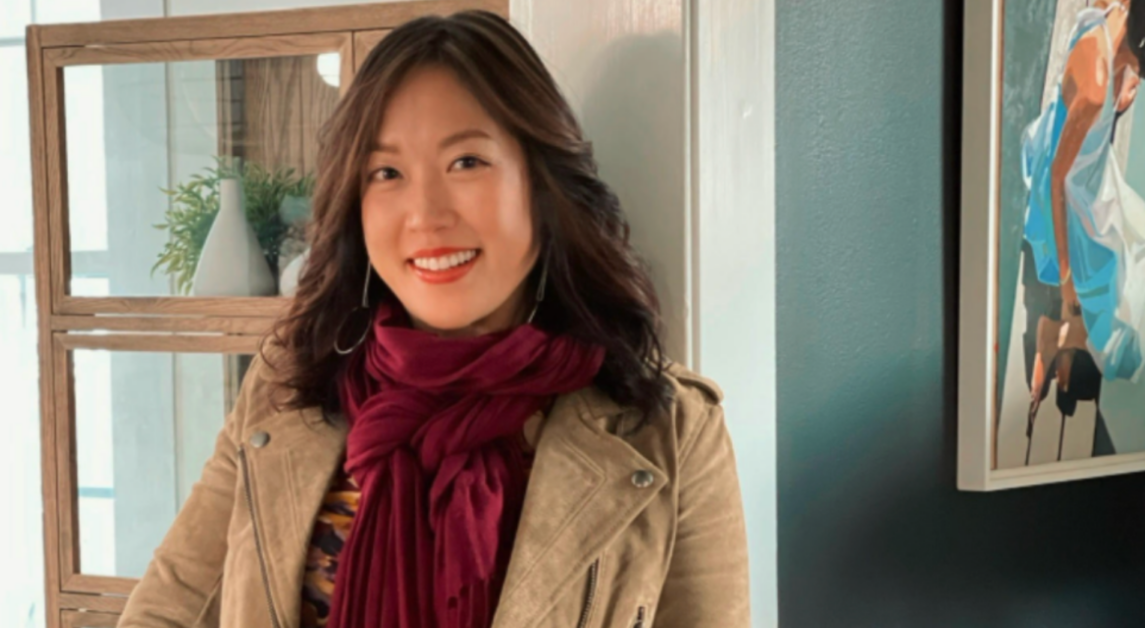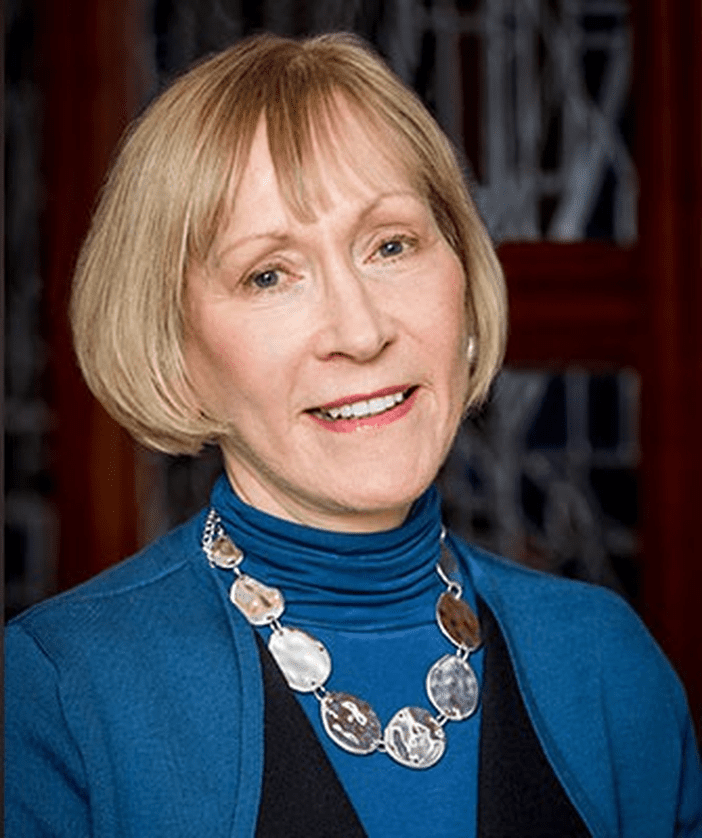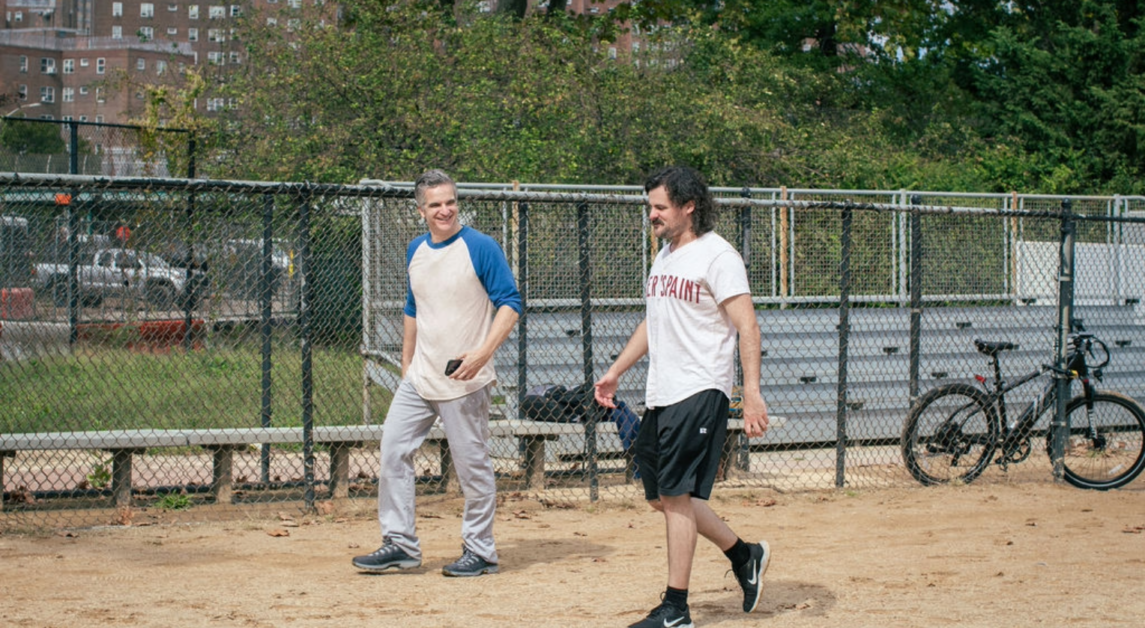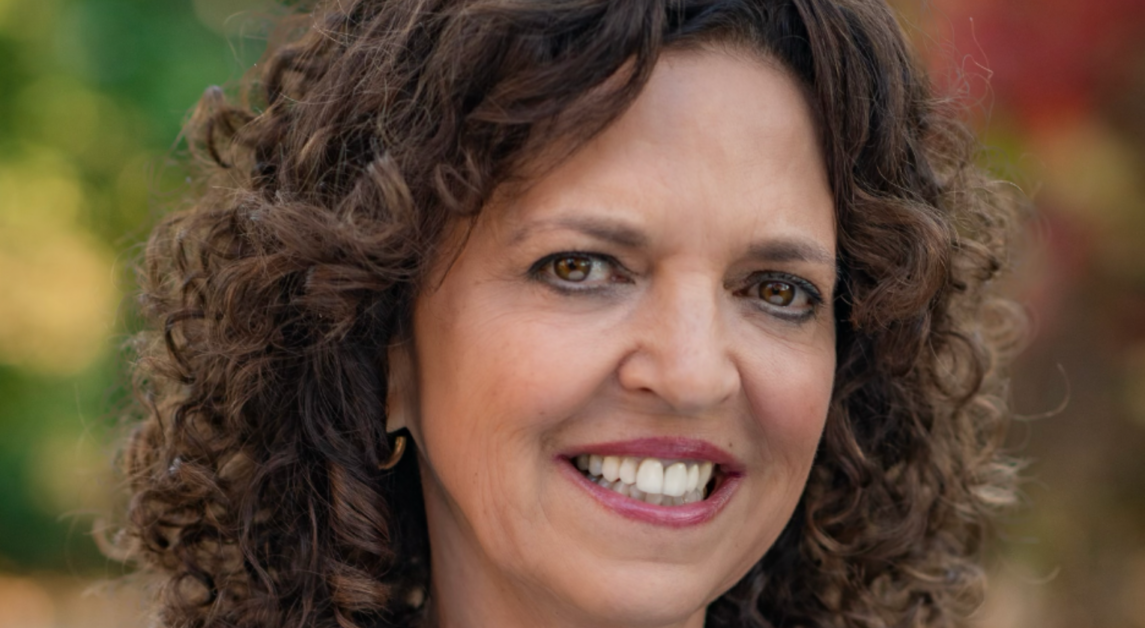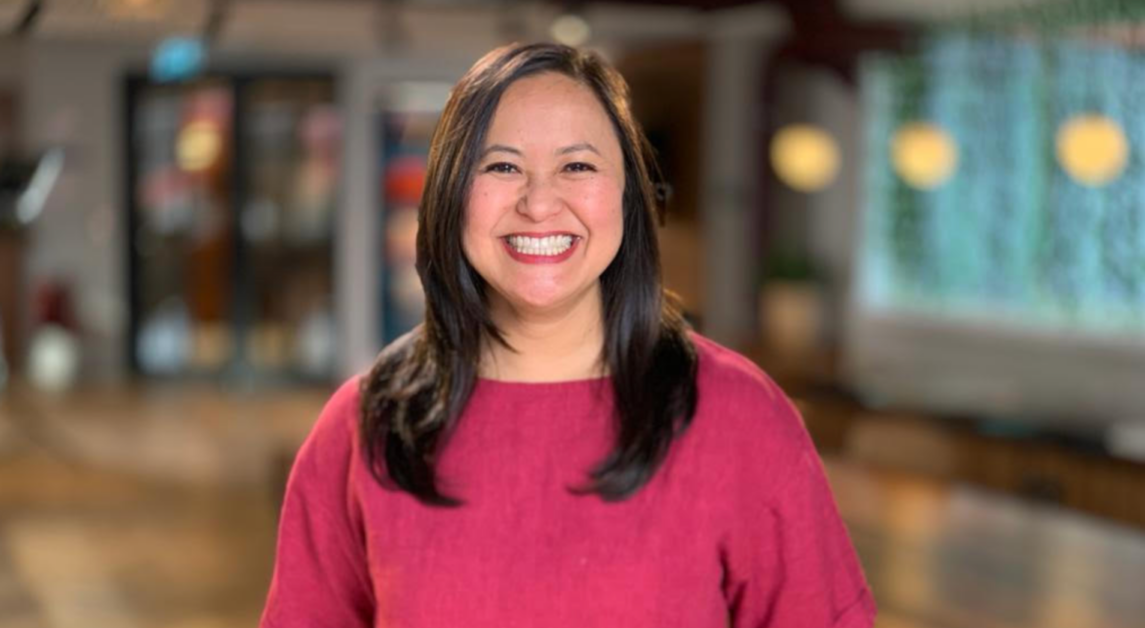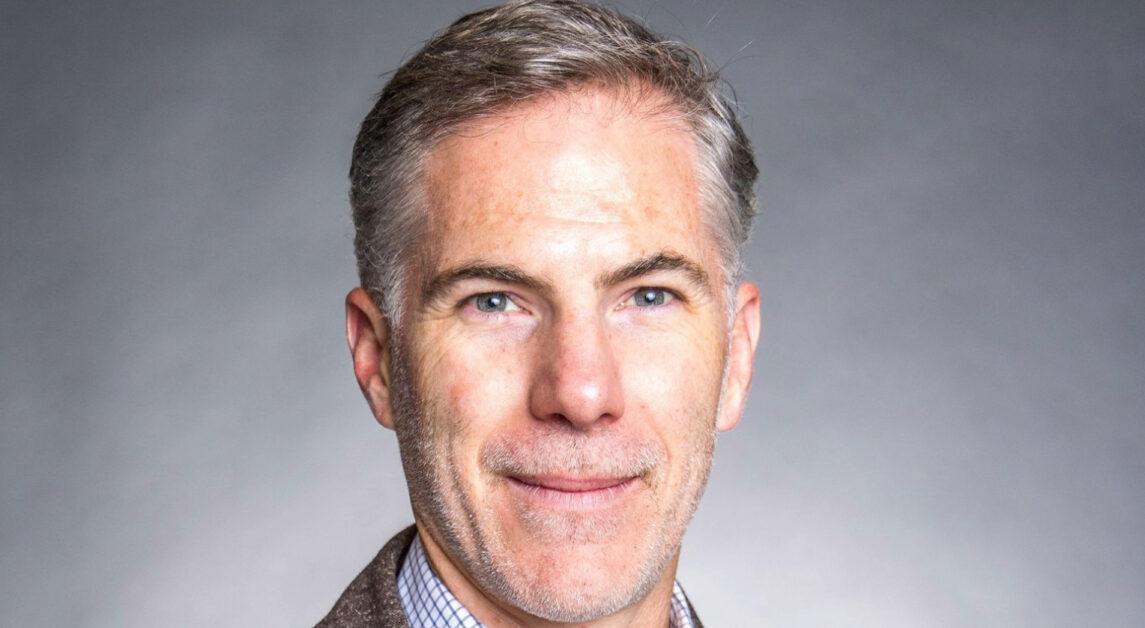The 2021–22 academic year has brought many changes across Boston College’s campus. As new and returning students prepared for a more normal year of college with significantly fewer COVID-19 restrictions, professors prepared to take on their own set of new challenges—returning to in-person instruction.
In terms of time, the last year and a half of distance learning has been nothing more than a blip in the careers of the many BC professors who have spent years teaching fully in person. The impacts of other aspects for these professors, though—the adaptations they underwent and lessons that have stemmed from the pandemic—have been immeasurable.
Here and Now: Returning to an In-Person Environment
The return to the classroom has been long-awaited by both students and professors—but the shift has been especially pronounced for BC’s professors who were entirely remote during the 2020–21 academic year.
“I think I thought, you know, after … a year and a half of remote teaching, just walking back into the classroom, I’d be ready to go in the same way, because I’ve taught for several years,” assistant professor of English Christy Pottroff said. “And you know, I take my teaching very seriously, but I think I was rusty.”
Despite having years of in-person teaching experience prior to the pandemic, associate communications professor of the practice Celeste Wells felt the same sense of difficulty when going back to the classroom, she said.
“Teaching is performance … we’re on stage all day long,” she said. “[Last year] we all had to learn how to sit still and teach to a fixed camera, and so, then you move back into … the dynamic stage. The first week, I certainly came home and said, ‘Oh my gosh, I don’t feel like my mouth is working right.’”
 Clinical instructor in the Connell School of Nursing Dorean Hurley had a shorter transition period between online and in-person instruction, as nursing classes in the summer of 2021 were held in person. She said that she felt both excited and nervous before lecturing in front of a large class again.
Clinical instructor in the Connell School of Nursing Dorean Hurley had a shorter transition period between online and in-person instruction, as nursing classes in the summer of 2021 were held in person. She said that she felt both excited and nervous before lecturing in front of a large class again.
“It was nerve-wracking a little bit because … I was completely remote in the spring semester, so I’m always nervous on the first day of class, no matter what. But I think I was a little more anxious, the first couple of classes in the summer, and for the fall semester,” Hurley said.
Though she taught in-person classes during the summer, she said, preparing on a larger scale of the fall semester was still an adjustment. Hurley said that she needed to hone her social skills again, especially after having limited human contact for more than a year. Another part of the adjustment was coping with the idea that COVID-19 may be transmitted in her classroom. From her perspective as a healthcare provider, seeing students without masks was worrisome.
“As a healthcare provider … that’s been a real struggle for me to see students in class, sitting right alongside of each other both people not wearing masks,” she said. “That I have a problem with only because I’m a nurse, and what we do in the hospital setting is not what we’re doing in the classroom setting, so … I worry about transmission,” she said.
Compared to last year, when COVID-19 protocols were uniform and strictly enforced, many decisions were left up to professors this year, such as what to do if a student misses class due to isolation. Increased guidance from the University on these matters would have also helped with the transition back this year, assistant professor of the practice in the classics department Mark Thatcher said.
The challenge hasn’t just been rustiness and the uncertain state of the pandemic—the world is also a different place than it was two years ago, Thatcher said.
“It requires rethinking everything again almost from scratch,” Thatcher said. “[I’m] needing to think about masks, needing to think about recording—which I never would have done before—for when a student is out for any reason. The technology that I have to juggle is so much more than ever before … learning how to project my voice in a mask is a challenge.”
Because of the prolonged period of teaching online, many professors—especially those who were entirely remote—started getting fully comfortable with being on Zoom. Thus, shifting online lesson plans and content back to the classroom had a unique set of obstacles, assistant professor of classics Hanne Eisenfeld said.
“Just thinking about the technological adjustments of how do you make what worked on Zoom into something that will play in the classroom—what was on the board, what needs to be printed,” Eisenfeld said. “But [also] on the smaller scale, where I could take the theory of the class, and then sort of translate it into physical space.”
 Initial adjustment periods aside, Wells said the return to in-person learning is important.
Initial adjustment periods aside, Wells said the return to in-person learning is important.
“I think in the end it’s healthier for everyone, even if it’s hard, and I don’t mean COVID, [but] I think developmentally, it’s good for people to have to interact with others,” Wells said. “I think … we’re all going through growing pains right now.”
Some professors have also noticed a change in students after a year and a half of modified classroom settings.
“It’s not like all students are delighted to be doing homework all the time, but … they are energized to be around others,” Wells said. “There’s a vibrancy among students right now, where I think … we’re all a little more grateful for what we have versus taking it as the status quo.”
Associate professor of communication Michael Serazio also said that his students have shown their enthusiasm and gratitude to be back fully in person.
“These have been probably the best … first three weeks of a semester that I’ve ever experienced as a professor,” he said. “The energy, the vibe is the best … in my career of teaching. I mean … it’s obvious but it’s just [that] when you’ve been deprived of something, you’re that much more appreciative and energetic about it.”
2020: A Reimagined Academic Year
Because of the unpredictable and contagious nature of COVID-19, many professors chose to remain online throughout the duration of the 2020–21 academic year to protect themselves.
“So I stayed online for both semesters for, you know, health reasons, as I’m sure anyone would say,” Thatcher said. “I think that I found in the fall that the system I came up with was working pretty well, and so I basically then did the same thing in the spring.”
Some professors had other reasons to remain online, such as their families’ health. For Pottroff, who has an unvaccinated child, a brother with brain cancer, and other high-risk family members, teaching virtually allowed her to keep her family safe, she said.
For professors teaching large classes or classes with enough international students, the University made the call that certain classes would run online.
Once professors decided or were told by the University to use an online format, they were tasked with adjusting course material and methodology. The good news, Eisenfeld said, was that they could apply the lessons learned during spring 2020’s hectic transition to online as they entered the fall of 2020.
“The following academic year we had the summer to think about how to retool our classes, the CTE [Center for Teaching Excellence] was extremely helpful in providing guidance for that,” Eisenfeld said. “And so it was a much more considered process of thinking about, ‘How can I use those digital tools to really bring out the material and let people engage?’ So I think that was more helpful.”
For Thatcher, the hardest part was reimagining the format of his classes. He felt unprepared and under trained at first, he said, but by the beginning of the semester, he became more comfortable.
Another adjustment some BC professors faced was teaching virtually at the same time as their partners. Eisenfeld and Thatcher, who are married, had to plan how to best share their space at home.
“The biggest challenge is that we have an office that we share … it required a certain amount of planning about who is going to be where when, and awareness of sound traveling through the walls, so I’d hear Greek being taught while he was listening to my [classical mythology] class, but it was okay,” Eisenfeld said.
Once the semester was underway, professors teaching discussion-based classes had to be extra intentional about fostering conversation over Zoom.
Associate professor of English Robert Lehman said his upper-level classes usually range from 12 to 15 students, allowing for students to easily jump into the conversation while in person. Over Zoom, establishing this natural flow was much more difficult.
“I was using, you know, the hand raise function … things like that, and somebody who had a really immediate reply to a point that someone had just made then wouldn’t get to speak because I just go through them in order,” Lehman said. “It just kind of felt like a lot more … call and response, and a lot less organic communication.”
 Professors who used hybrid or in-person models, like Serazio, also had to adjust to not only teaching in a mask, but also delivering lectures to students whose faces were half covered. For years, he relied on nonverbal cues to understand if students were processing the material—which became impossible.
Professors who used hybrid or in-person models, like Serazio, also had to adjust to not only teaching in a mask, but also delivering lectures to students whose faces were half covered. For years, he relied on nonverbal cues to understand if students were processing the material—which became impossible.
“Especially that first month, my brain as a … teacher was trying to process the fact that I had absolutely no clue whether any of the material was … landing in an effective way,” Serazio said. “As a professor … especially if you’re like a high self-monitor like I am … you’re constantly relying upon nonverbal cues, facial expressions, things like that, to try to gauge whether it’s working, whether the materials are working, whether it’s understandable, enjoyable … so it was just completely surreal and exhausting.”
Even though he was teaching in the classroom, Serazio felt the same sense of choppiness that Lehman did online, and said that he had to work twice as hard to foster energy and interaction.
Online classes challenged both professors and students to adapt with regard to learning, but the adjustment went beyond this—professors had to take into account how the pandemic impacted students outside of the classroom as well, Serazio said.
He tried to preface class by reminding his students that the current situation was surreal, difficult, and exhausting, he said. Beyond recognizing that nobody was experiencing a normal year, he also tried to create space to check in on his students’ mental state, he said.
“There were moments where I would try to have class sessions that were really just around coping and checking in with people’s mental health,” Serazio said. “Like, … let’s just all kind of talk about what’s getting us through this difficult year, what strategies you’re using, where are you finding joy, where are you finding rejuvenation.”
Apart from academics, many professors also missed the authentic in-person interactions and connections with their students. Hurley particularly felt this lack of interaction with her students because she teaches courses of varying levels in the nursing program. She usually has the chance of getting to know the nursing students as freshmen, but teaching online prevented her from doing so.
“I get to know some of the students as freshmen in the intro professional nursing class, and you weren’t able to do that,” Hurley said. “And so then they follow up and come into a big fundamental class in nursing, and I don’t know them as well as I did in previous years, so … that’s another challenge.”
Successes and Solutions
Though professors encountered many obstacles while teaching remotely, their temporary solutions to these problems taught them lessons that they would not have learned in a normal academic setting. Now, after the return to in-person instruction, many of these temporary lessons have stuck.
During the pandemic, the difficulty of processing everything that was happening worldwide prompted Wells to hone in on the importance of being clear in her communication to her students, which is one way to promote a sense of security in her classroom setting, she said.
“What I learned is that … people can’t learn if they don’t feel safe,” Wells said. “Before, [students] had a normal syllabus that they could follow, but I immediately got them a brand new one that was online that could say, ‘Here’s how you can now understand what we’re going to do going forward,’ and sometimes just having that much clarity in a world that’s completely unclear … can prove useful.”
 A common effect of the 2020-21 school year—for professors and students alike—was Zoom fatigue, where individuals would find difficulty in paying attention after looking at a screen for several hours. To combat this and to ensure student engagement, Thatcher divided his class size and lecture time in half to facilitate a more intimate discussion.
A common effect of the 2020-21 school year—for professors and students alike—was Zoom fatigue, where individuals would find difficulty in paying attention after looking at a screen for several hours. To combat this and to ensure student engagement, Thatcher divided his class size and lecture time in half to facilitate a more intimate discussion.
“I tried to keep the Zoom room small for my larger classes—which were 40 students—so I actually divided them into two sections of 20 students each,” Thatcher said. “And rather than meeting as a whole group for an hour and 15 minutes, we met for 30 minutes each … I tried to be really focused in those classes. I think students were into that.”
Eisenfeld also divided her 75-minute lectures into halves. Having a condensed class time meant that she had to rethink how to best use her time, she said.
Pottroff emphasized group work in her remote classes. She said that establishing a sense of community within the classroom is something professors can forget about, but the heightened sense of isolation during the pandemic reminded her of its importance.
“I did more sustained … group work [during] the remote semesters, and I think that that was really valuable,” Pottroff said. “I like to help foster those connections and friendships in a way, and it felt really important during the pandemic when everyone was isolated, you know that those relationships could be really meaningful.”
The struggle to foster a class community was multiplied for professors like Wells who taught asynchronous sections. Wells recognized the danger of students simply turning in assignments without ever engaging with the professor or classmates, which led her to implement more intimate sections of her courses, she said.
“I designed a portion of all my asynchronous classes called tutorials where they had several different choices of times that they could come, and we would be in small groups, like 10 people, online,” Wells said. “We would just discuss stuff, we would just have conversations about [the] material and how it connected to the real world, and I think that worked really well from a time perspective because I had them at all different … times so that the international students would be able to attend.”
The successes stemming from intentionally carving out space for discussion and connection have continued to shape this year for many professors. Some professors have also preserved methodological approaches from online learning in their in-person teaching routines.
After being forced to administer exams online last year, Thatcher found many benefits—from not worrying about a student missing the exam to not having to struggle to read handwriting—and has continued to administer them online this year.
So far this year, Wells has had both virtual and in-person office hours. She said that this method is useful because it caters to students’ availability and comfort levels.
“They can do virtual or in-person office hours with me, depending on how they feel, or just the space they’re in in a particular week,” Wells said. “It’s been nice because it’s giving them more flexibility in the way they connect with me, if they’re more comfortable … online. For me to be able to have those different options for them.”
 During the transition back to in-person teaching this fall, Eisenfeld felt a push to combine the best aspects of each format, but she recognized this goal was unattainable across the board.
During the transition back to in-person teaching this fall, Eisenfeld felt a push to combine the best aspects of each format, but she recognized this goal was unattainable across the board.
“In some ways, there’s a temptation to take all the things that worked on Zoom, and then think of all the things that work in person and try to do them all, which is terrible because that’s too many things for any given class,” Eisenfeld said.
She has devoted herself back to the mode of in-person teaching, but still finds value in remote-learning tactics like Canvas discussions, she said.
“Having made them part of that hybrid asynchronous/synchronous teaching last year, I saw that [Canvas discussions] really gave students a chance to dig into the material and develop thoughts before discussion, and then discuss much more meaningfully, and so that’s one of the things I’m keeping,” Eisenfeld said.
Reflections and Lessons Learned
Ultimately, a year and a half of virtual teaching provided professors the opportunity to reflect on their own teaching practices and learn from the processes of online learning.
For Serazio, who was previously open to letting students use technology in the classroom, the time being virtual caused a shift in his views—no screens are allowed in his classroom, he said.
“The point of [the] pandemic was to change you,” he said. “The point is not to go back to normal. The point was to go back to something … that’s better than normal, it’s different than normal. And in some small way … it was sort of the realization of … the negative energy that screens can drain out of the room.”
 Wells said that the pandemic allowed her to learn from her own teaching practices and forced her to think about how to achieve learning outcomes in a new environment.
Wells said that the pandemic allowed her to learn from her own teaching practices and forced her to think about how to achieve learning outcomes in a new environment.
“We have to find a new way to function,” she said. “I think that’s something that has adapted, but the truth is, we’re only three weeks in and so … there’s gonna be a learning curve for all of us, students included. The shifts we’ve all experienced over the last several years have been really massive.”
Wells also emphasized the importance of tending to the whole student.
“If students are struggling, I hope they remember they’re not alone with these challenges and they should reach out to friends and faculty and staff across campus that they trust so that they can really work through this new world together, rather than apart or in isolation as we’ve been over the last couple of years,” Wells said.
Featured Image by Ikram Ali / Heights Editor
Photos by Ikram Ali / Heights Editor and Vikrum Singh / Heights Editor

